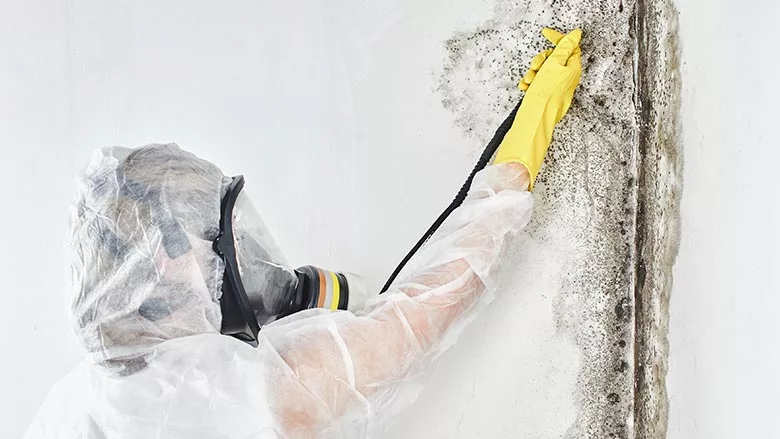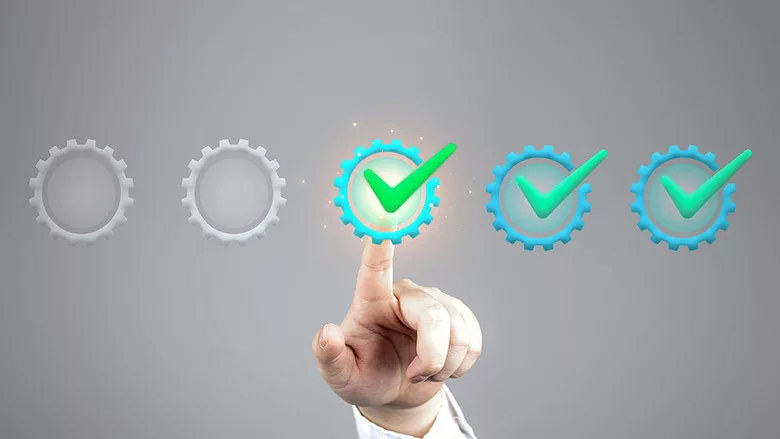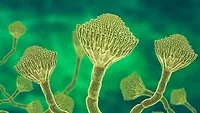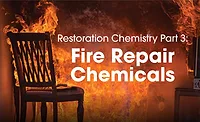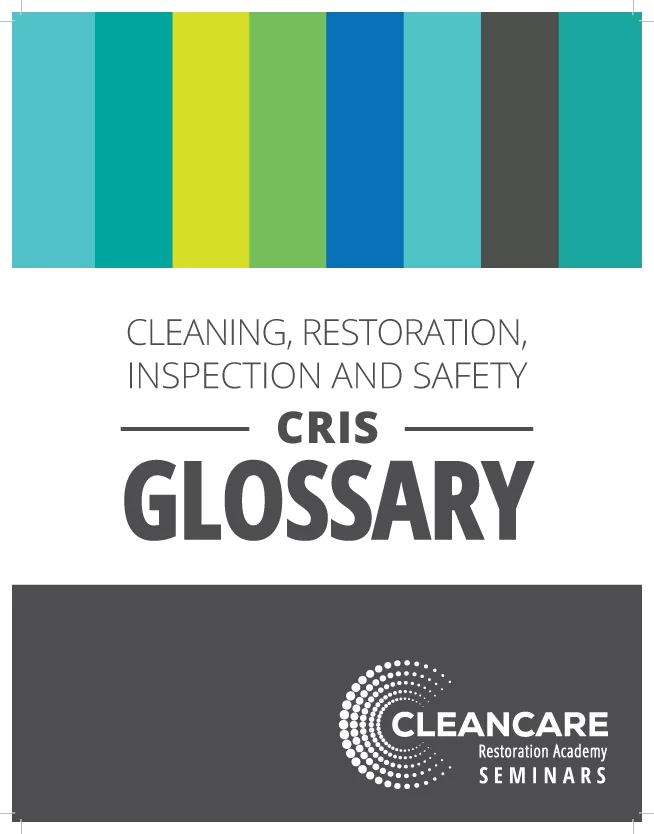What the Restoration Industry Can Do To Minimize Fungal Infections

Photo credit: coja1108 / iStock / Getty Images Plus via Getty Images
In many of the mold remediation guidance documents and training classes, there is a brief discussion of the potential health effects associated with fungal exposure. Allergy symptoms are the most frequently mentioned health issue, along with the worsening of asthma and other upper respiratory illnesses. Over the last few years, the recognition of individuals becoming sensitized to mold, and the discussion of chronic inflammatory response syndrome (CIRS), has gained some well-deserved recognition.
The most recent health concern starting to be discussed in earnest is the impact of mycotoxin exposure on the health of occupants in mold-contaminated structures. This emphasis follows the science of new technology like the AirAnswers sampler that, for the first time, can actually measure mycotoxins in the air.
Despite these necessary expansions to the discussion of fungal health effects, the area that is glossed over is the fact that exposure to mold contamination can lead to fungal infections. Skin infections, respiratory infections, and even infections of internal organs can result from exposure to mold. This phenomenon is not unknown to both medical providers and restoration professionals, just rarely discussed. With the exception of the Mayo Clinic bulletin on mold exposure causing fungal infections that result in recurring sinusitis, not much is heard about this critical medical situation in the restoration field.
But that is about to change.
Recognition of Growing Threat From Fungal Infections
In late October 2022, the World Health Organization (WHO) announced that the international agency has drawn up the first ever list of fungal pathogens posing the greatest threat to human health. This list comes with a warning that some strains are increasingly drug-resistant and becoming more widespread. The WHO is publishing the report (which can be downloaded for free from: https://www.who.int/publications/i/item/9789240060241) primarily to bring attention in the medical community to this growing threat.
At this point, I am sure some readers in the restoration industry are thinking to themselves, “So what if the World Health Organization has published some list? What does it have to do with mold remediation?” The fact is that many mold inspectors and remediators do not recognize real threats to their crew members and their business. The WHO is publicizing the potential threat from fungal infections because they are real!
Generally, fungal infections plague individuals with underlying health problems who have weakened immune systems. This category of individual has traditionally been described as individuals who are receiving chemotherapy, are taking immune suppressive drugs after transplants or for other medical conditions, or are elderly. In addition, individuals recovering from viral or bacterial infections like the flu virus, mononucleosis, and measles can have temporarily weakened immune systems for a brief time.
There is an ongoing debate about what risk people who have suffered from COVID 19, particularly individuals with repeat infections, have in regards to a weakened immune system. It is also critical to note that a person’s immune system can also be weakened by smoking, excessive alcohol use, and poor nutrition.
Fungal Bad Actors Are Found in Mold Remediation Projects
Sadly, many people do not even realize that their immune system is not top notch, so they do not understand the threat of fungal infections in the daily course of restoration activities. The reality of fungal infections resulting from “normal” mold remediation was driven home to the Wonder Makers’ team by a call we received just a few years ago. A mold inspection was necessary in the home of a former hoarder.
The homeowner had passed away and his family members all lived out of state. Given the condition of the house and the amount of worthless material that had to be disposed of, the children had hired a cleaning company to empty the house of all the contents.
Prior to the clean out, the children talked to the next door neighbor, who had frequently provided meals for their father. The survivors told the neighbor about six or seven items of value to the family, and where they were likely located. She agreed to go into the house and retrieve them prior to the arrival of the cleaning crew.
She was in the home less than two hours looking for, and finding, most of the requested treasures. Although the neighbor smelled the mold even from the entry, she just assumed that it was just obnoxious and suffered with it while she finished her task.
Less than two weeks after the neighbor had been in the moldy hoarder house, our company received a call from her attorney to conduct an inspection of the home. The neighbor was now hospitalized with a severe fungal infection of her lungs and was not doing well. To make matters worse, the autopsy on the hoarder homeowner had been completed and it turns out that he also had suffered from the same fungal infection – aspergillosis. Our role was to take both air and surface samples, which were then compared to the molds cultured from the lungs of the sick woman. The samples matched, the neighbor died, and a lawsuit from her family followed.
Given this experience, it did not surprise us to read the new WHO document and see that Aspergillus fumigatus was listed in the top tier of dangerous fungal organism to study. Aspergillus fumigatus is one of four molds in the WHO “Critical” priority list, being joined by Candida auris, Cryptococcus neoformans, and Candida albicans. A total of 19 different molds are contained in the “Critical”, “High” and “Medium” priority lists designated by the global health group. Interestingly, Stachybotrys is not included in the WHO document as its health damage stems from its naturally produced poisons (mycotoxins) rather than its proclivity to cause infections.
The Remediation Standard of Care is Designed to Reduce/control the Spread of Spores
The key fact about fungal infections is that a person has to have exposure to viable spores (those able to live and reproduce) to acquire an infection. While spores are all around us in nature, the goal for people with weakened immune systems is to minimize exposure to them as much as possible. For medical professionals, the primary approach is to control the environment in order to keep infectious agents (fungal spores, bacteria, and/or viruses) from being spread from one sick person to other susceptible occupants.
Mold remediation professionals should learn from the emphasis WHO is placing on fungal pathogens to recommit to remediation methods that control the spread of spores and re-emphasize the correct use of personal protective equipment for their crew members. Given the number of items mentioned previously that can impact a person’s immune system and make them more susceptible to fungal infections, it is impossible to say with certainty which customers or crew members are at risk.
That is why mold remediation in conformance with the standard of care is so important. All of the primary documents, especially the S520 Mold Remediation Standard put out by the Institute of Inspection, Cleaning, and Restoration Certification (IICRC), recommend specific dust/particle/spore reduction techniques:
- the use of airtight isolation barriers to segregate a mold work space,
- negative pressure in the work area created by air filtration devices,
- physical removal of sources of fungal contamination from non-porous or semi-porous surfaces, and removal of porous materials with visible mold growth,
- cleaning with high efficiency particulate air (HEPA) vacuums,
- the addition of a separate decontamination unit at the entry of the work zone,
- waste control procedures that include wrapping or bagging waste before moving it out of the work area,
- the use of personal protective equipment; including respirators, protective coveralls, and gloves; to keep workers from breathing in spores and to prevent their spread outside the work space.
A part of the S520 that is often overlooked is the recommendation to supplement the removal of fungal sources with the cleaning of surfaces outside the work zone that have spores from the fungal colonies which have deposited on surfaces (defined as “Condition 2” in the IICRC document). Cleaning these spores will go a long way to prevent possible fungal infections.
Non-traditional Remediation Techniques Can Be Helpful
One thing that is not recognized as a legitimate mold remediation technique is to kill the mold spores rather than remove them from an impacted structure. Although it is true that dead mold cannot reproduce to cause infections, using fogs, sprays, foams, or gasses as an alternative to physical removal creates the potential for fungal colonies to continue to proliferate. In addition, fungal sources treated with antimicrobials have been shown to increase the release of spores as a survival mechanism, which can make the exposure situation worse for occupants.
Even so, adding a step to traditional remediation and fogging the air following the removal of source material to lower the airborne spore concentration can be valuable in reducing the potential of fungal infections. Whether an antimicrobial or a dust suppressant is used is not as crucial as adding the post removal step of “air washing.”
The Risk of Fungal Infections is Real
Both the WHO report and our own professional experiences confirm the reality of fungal infections as a risk for remediation professionals. From inspections of moldy structures without personal protective equipment, to crew members or occupants that have unknown, temporary or more permanent immune system weakness, preventing fungal infections is a critical aspect of mold remediation work.
Looking for a reprint of this article?
From high-res PDFs to custom plaques, order your copy today!

